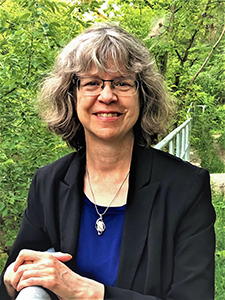Would You Like to Live to 100?
Ask me if I’d like to live to 100 years old, and I’ll reply: “Yes, but only if I can stay independent and a productive member of my community.” Many Canadians end up not enjoying their last years due to chronic conditions. We think of such things as dementia and heart disease as a natural part of aging simply because these conditions and others are seen more in older people. There are, however, communities in the world where chronic disease is very low and people live long and healthy lives. These areas have been called “Blue Zones” by scientists.

The Blue Zone Difference
So, what are Blue Zones doing differently that we are missing out on here? I’ll explain that in a minute. We used to think that we were only as healthy as our genes. Now we know this isn’t true, because our genes only account for 20–25% of our risk for disease:[1] this means 75–80% of the risk can be modified through lifestyle change. In the Blue Zones, habits, culture, and environment are the true predictors of the health and longevity of the population.[2]
While that might be fine in those locations, here in Canada, most of us live in large urban centres. Is replicating that lifestyle here even possible?
The answer is yes. In fact, it’s already being done. Named the “Blue Zone Project,” this organization works to help communities incorporate Blue Zone concepts. Canada’s first community is in Airdrie, Alberta.[3]
Blue Zone locations have favourable conditions for aging, like a more agrarian way of life—with the exception of the newest Blue Zone designation, Singapore, a heavily industrialized city-state: It recently acquired its status due to governmental policy changes rather than an idyllic environment, a first in the history of Blue Zones.[4]
This is great news for other industrialized countries with large urban centres. Singapore has a rapidly aging population much like Canada but, unlike us, they developed an envious comprehensive plan to support their seniors, a plan which Canada might do well to emulate.[5]

Actions to Take to Live Longer
The Blue Zone data gives us tools to curate a lifestyle and environment to maximize longevity and reduce chronic disease. There are 9 characteristics describing the people in these areas, that lead to healthy longevity.[6]
Naturally Active | Movement is built into daily life, not scheduled workouts |
Purpose-Driven | A strong sense of personal purpose |
Stress-Aware | Simple daily habits help reduce tension |
Mindfully Nourished | Meals end when satisfied, not stuffed |
Plant-Focused | Beans and whole plants are dietary staples |
Moderately Indulging | A daily drink enjoyed socially and mindfully |
Socially Connected | Regular involvement in community |
Family-Oriented | Strong intergenerational bonds |
Positively Motivated | Positive social networks to reinforce healthy habits |
Here are my proposed longevity actions based in part on some of these characteristics. As you’ll see, there are many ways you can leverage the learnings from the Blue Zones without ever leaving home!
Move Often
Small, frequent movements can have more impact than going to the gym. Use public transit. Housework, yard work, and playing with children and pets all count. Pace while speaking on the phone. Take frequent breaks from sitting.[7]
Have Purpose and Goals
Find something that deeply excites you, that gets you out of bed in the morning. And keep in mind: purpose is just as important in retirement. Volunteering; raising a family; caring for aging parents; or taking on a new hobby, class, or job can all meet this goal.[8]
Downshift
Enjoy ending your busy day with a relaxing activity such as a nap, a bath, or a stroll in nature. Spend time with family members and pets.
Adopt the 80% Rule
In the Blue Zones, people eat a smaller meal in the evening, leaving the table when about 80% full. Decreased caloric intake extends life and can ward off disease.[9]

Stay Social
Most people who live long healthy lives are active participants in a faith group or their community, they live near family members, and have a life partner and close friends. Amazingly, even our gut microbiome can improve its diversity, simply by hanging around with other people![10]
Keep a Garden
The Singapore study showed that therapeutic horticulture cultivated a sense of purpose in the participants. It helped them maintain healthy sleep and their psychological health, and they showed improved cognitive functioning over time.[11]

See Your Doctor Regularly
Stay on top of the screening tests recommended by your doctor. Ask for a vitamin D test.[12] For optimal lifespan, check your waist-to-height ratio (it should be less than 0.5).[13] A fitness app or a simple journal can be used to record your nutrition, exercise, sleep, and mood. I like the app Cronometer,[14] which helps figure out any nutritional deficiencies. (Hint: The most common are protein, fibre, vitamin E, and magnesium.[15], [16])
Leverage Technology
Take advantage of wearables such as a smartwatch or smart ring to monitor your health. They can be helpful for tracking activity, sleep, stress level, and more.[17] They are available in a range of prices and come with a range of functions. If you are interested in even more health data to guide you, consider purchasing a genetic test online or ask a naturopathic doctor to test your gut microbiome.[18]
Even if you don’t currently live in a Blue Zone and are not yet part of a Blue Zone community project, adopting even a few of these measures can help you to live a healthy, long life. Reaching a healthy century of life has never before been so attainable!

Wendy Presant, RHNC, CFMP
With a background in nursing, naturopathic, and functional medicine, Wendy Presant is currently registered as a health-and-nutrition counsellor. She provides virtual coaching services to individuals looking to optimize their health.
naturalcoachathome.care
References
[1] [No author listed.] “Is longevity determined by genetics?” MedlinePlus. https://medlineplus.gov/genetics/understanding/traits/longevity/ · Updated 2022‑07‑11.
[2] Roundtable on Population Health Improvement; Board on Population Health and Public Health Practice; Institute of Medicine. “Lessons from the Blue Zones®.” Chapter 2 in: Business Engagement in Building Healthy Communities: Workshop Summary. Washington: National Academies Press, 2015‑05‑08. Available from https://www.ncbi.nlm.nih.gov/books/NBK298903/.
[3] [No author listed.] “Groundbreaking Blue Zones Project Expands to Canada.” Blue Zones®. https://www.bluezones.com/news/groundbreaking-blue-zones-project-expands-to-canada · [No date given.]
[4] Galloway, L. “The world’s sixth ‘Blue Zone’: Why Singapore values both quantity and quality of life.” BBC. https://www.bbc.com/travel/article/20241002-singapore-the-worlds-sixth-blue-zone · 2024‑12‑24.
[5] [No author listed.] “Action Plan for Successful Ageing 2023.” Ministry of Health, Singapore. https://www.moh.gov.sg/others/resources-and-statistics/action-plan-for-successful-ageing · 2024‑08‑13.
[6] Buettner, D. “Power 9®: Reverse Engineering Longevity.” Blue Zones®. https://www.bluezones.com/2016/11/power‑9/ · [No date given.]
[7] University of Pennsylvania. “Moving around more linked to longer life.” ScienceDaily. https://www.sciencedaily.com/releases/2016/02/160225140430.htm · 2016‑02‑25.
[8] Berman, R., and P. Weiser. “Having a sense of purpose may help you live longer, research shows.” MedicalNewsToday.https://www.medicalnewstoday.com/articles/longevity-having-a-purpose-may-help-you-live-longer-healthier · 2022‑11‑21.
[9] Redman, L., and E. Ravussin. “Caloric Restriction in Humans: Impact on Physiological, Psychological, and Behavioral Outcomes.” Antioxidants & Redox Signaling, Vol. 14, No. 2 (2011): 275–287.
[10] Sarkar, A., C.J.A McInroy, S. Harty, A. Raulo, N.G.O. Ibata, M. Valles‑Colomer, K.V.‑A. Johnson, et al. “Microbial transmission in the social microbiome and host health and disease.” Cell, Vol. 187, No. 1 (2024): 17–43.
[11] Sia, A., W.W.S. Tam, A. Fogel, E.H. Kua, K. Khoo, and R.C.M. Ho. “Nature-based activities improve the well-being of older adults.” Nature. Scientific Reports, Vol. 10 (2020): 18178.
[12] Mark, K.A., K.J. Dumas, D. Bhaumik, B. Schilling, S. Davis, T.R. Oron, D.J. Sorensen, et al. “Vitamin D Promotes Protein Homeostasis and Longevity via the Stress Response Pathway Genes SKN‑1, IRE‑1, and XBP‑1.” Cell Reports, Vol. 17, No. 5 (2016): 1227–1237.
[13] Ashwell, M., L. Mayhew, J. Richardson, and B. Rickayzen. “Waist-to-Height Ratio Is More Predictive of Years of Life Lost than Body Mass Index.” PLoS One, Vol. 9, No. 9 (2014): e103483.
[14] Available from https://cronometer.com/.
[15] McIntyre, R.L., M. Rahman, S.A. Vanapalli, R.H. Houtkooper, and G.E. Janssens. “Biological Age Prediction From Wearable Device Movement Data Identifies Nutritional and Pharmacological Interventions for Healthy Aging.” Frontiers in Aging, Vol. 2 (2021): 708680.
[16] Leitão, C., A. Mignano, M. Estrela, M. Fardilha, A. Figueiras, F. Roque, and M.T. Herdeiro. “The Effect of Nutrition on Aging—A Systematic Review Focusing on Aging-Related Biomarkers.” Nutrients, Vol. 14, No. 3 (2022): 554.
[17] Liu, Y.J., R.L. McIntyre, and G.E. Janssens. “Considerations Regarding Public Use of Longevity Interventions.” Frontiers in Aging, Vol. 3 (2022): 903049.
[18] Xiao, Y., Y. Feng, J. Zhao, W. Chen, and W. Lu. “Achieving healthy aging through gut microbiota-directed dietary intervention: Focusing on microbial biomarkers and host mechanisms.” Journal of Advanced Research, Vol. 68 (2025): 179–200.

